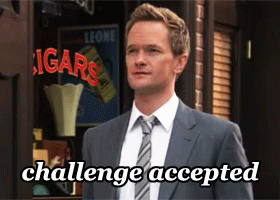It is difficult to pin down where passion begins or what ignites it. For Dan Rowden, creator of Magpile, his passion for web development began with learning to play a musical instrument. To be more specific, it all began with learning to play the bass back in the late ‘90s at the age of 13. What began as an interest in music, evolved into an interest in sharing and making the learning process easier for others seeking to learn. Bass-tabls.co.uk was born and although it would not last, the interest in web development would linger in Dan’s mind for years as he fiddled with sites here and there and finally got serious about the whole process while obtaining his Bachelor of Engineering degree in Media Engineering with a focus on web development, printing technologies and European business from Helsinki Metropolia University of Applied Sciences.
When Dan is not working his day job as a User Experience Designer for a Science and Technology university in the Middle East or browsing Stack Overflow and Dribbble, his favorite industry sites, he is dedicating his time to his true passion: web applications and the UX, UI and development that goes along with it. Last year, Dan combined his interest in magazines and web development into Magpile, an online community for magazine lovers. Dan was kind enough to take some time out of his week and share his thoughts on web development, magpile and the future of magazines.
Espresso (editor) is one of my favorite development tools. I only use that and Photoshop to make websites. There are a few compression tools I use, too, like jscompress.com or tinypng.org
If you have a team you have varied opinions and expertise, which leads to a more rounded and solid product. But as an individual you are forced to make decisions yourself so you can be quick and nimble, and work to your own deadlines.
Favorite developer language? Definitely Python. It’s a lot cleaner than most languages, in that you write only what you need (In Javascript or PHP, you should end lines with semi-colons and there are a lot of brackets needed in loops or if functions; Python has neither).
Working in web development, you can have an idea and make it into a product that people can use, within hours. Then you can change it and update it (and charge for it!), and it never has to be a 100% developed product, like if you were making a physical product.
There are a lot of sites I like the look of, but two that stand alone in my mind: gov.uk, which shows a lot of different information really clearly and easily available with its recent design (it has won awards) and Issuu, which is both beautiful to look at and interact with, and you can read magazines on it!
Magpile is like a Wikipedia for magazines. It is a reference to the world of print and digital magazines. It also has a community, where readers can sign up, say which magazines they own, discuss them and follow other users. I also launched a Store, where publishers can easily sell their magazines to Magpile’s global readership.
I wanted to keep track of my own magazines, which were spread across three countries. I decided once I’d started planning the site that I should develop it into something other users can use. This then spiraled into the large magazine reference it is today as users added more and more titles.
The site is built with Python, using the django framework. django is an awesome codebase that gives you a leg-up creating web applications. I did the coding (back-end and front-end) and design gradually over the past 1.5 years.
I think, like Wikipedia, Magpile should be a freely available and long-standing resource. Any change in the publishing field won’t affect this mission, nor Magpile’s impact as a record of print history. I can’t see magazines going away anytime soon, so Magpile should be around for a while, too.
For nearly every feature I’ve added there is something I didn’t know how to do. A simple thing like getting a cover image from the internet and saving it in the Magpile database and onto the Magpile server isn’t really that difficult, but as I’d never done it before I had to go out and read up on how it would work. I’m on stack overflow an awful lot researching different ways to accomplish a coding challenge.
I just launched Maggly, which is also aimed at the magazine market. It gives publishers a magazine-specific website with very little set up, which means that they can focus on releasing their magazine rather than spending time setting up and managing their website.
To be able to do my work, I have to be on the computer. I don’t like to be tied to a screen all the time, and would love to someday do things with my hands (like woodwork) instead.


